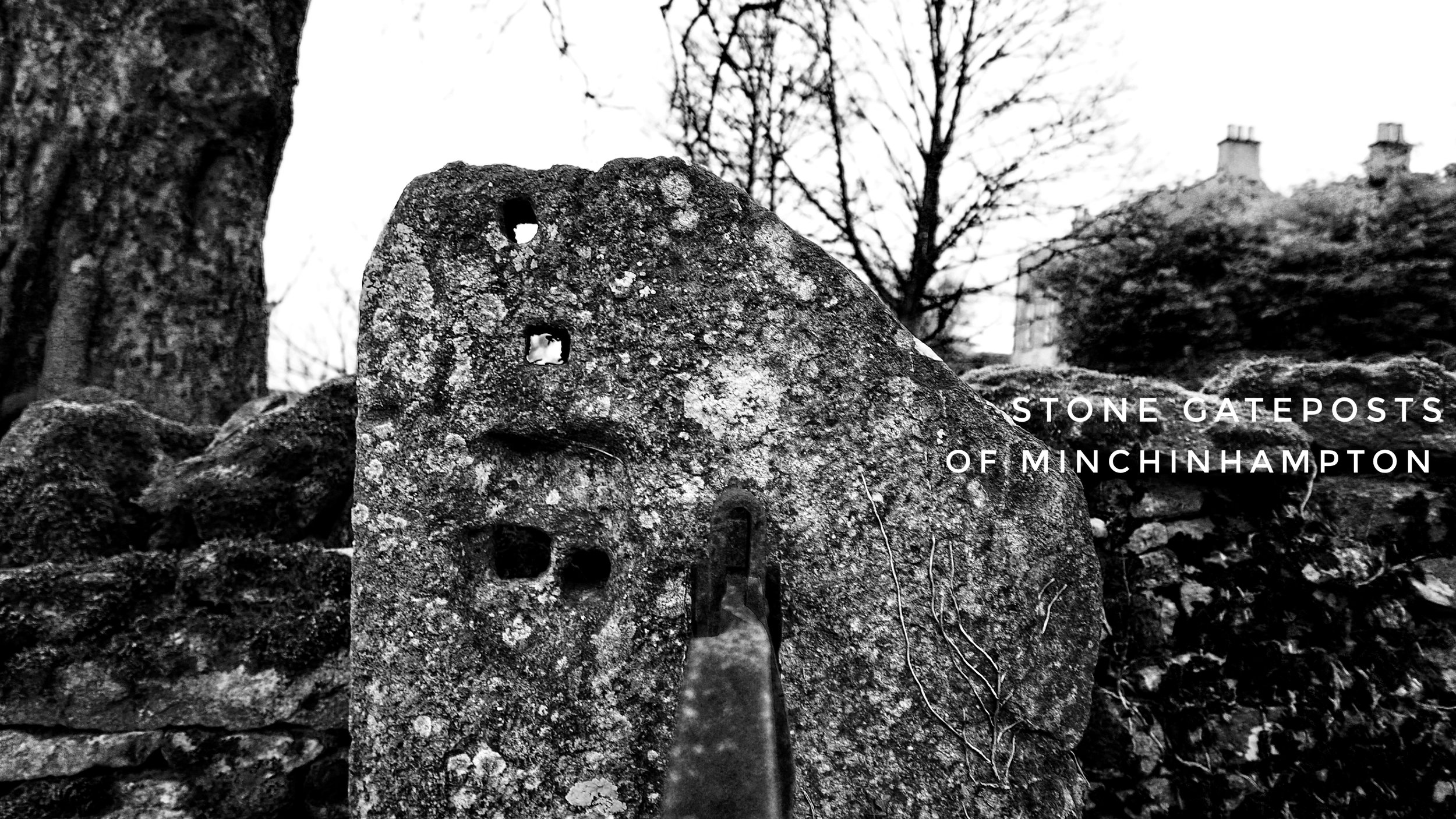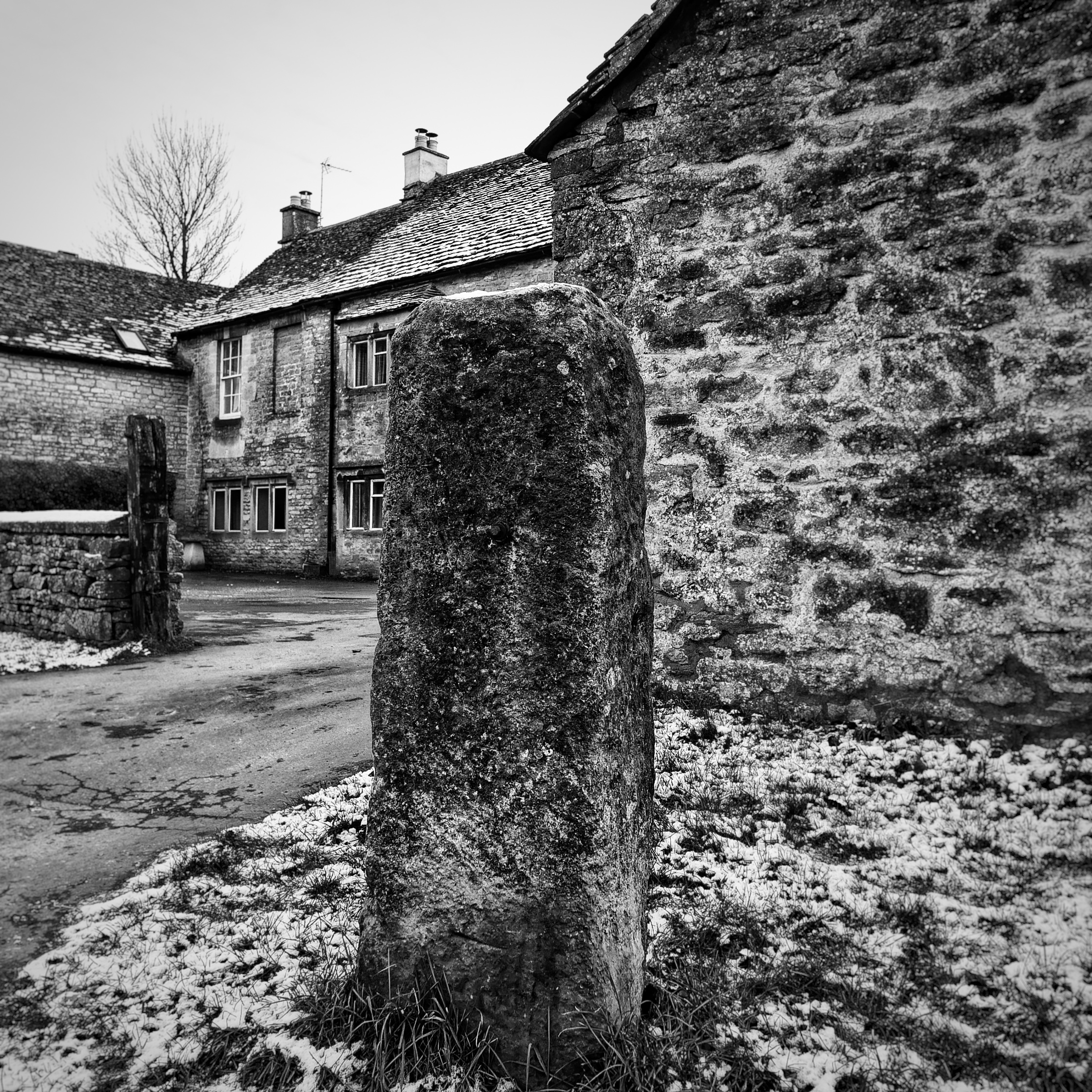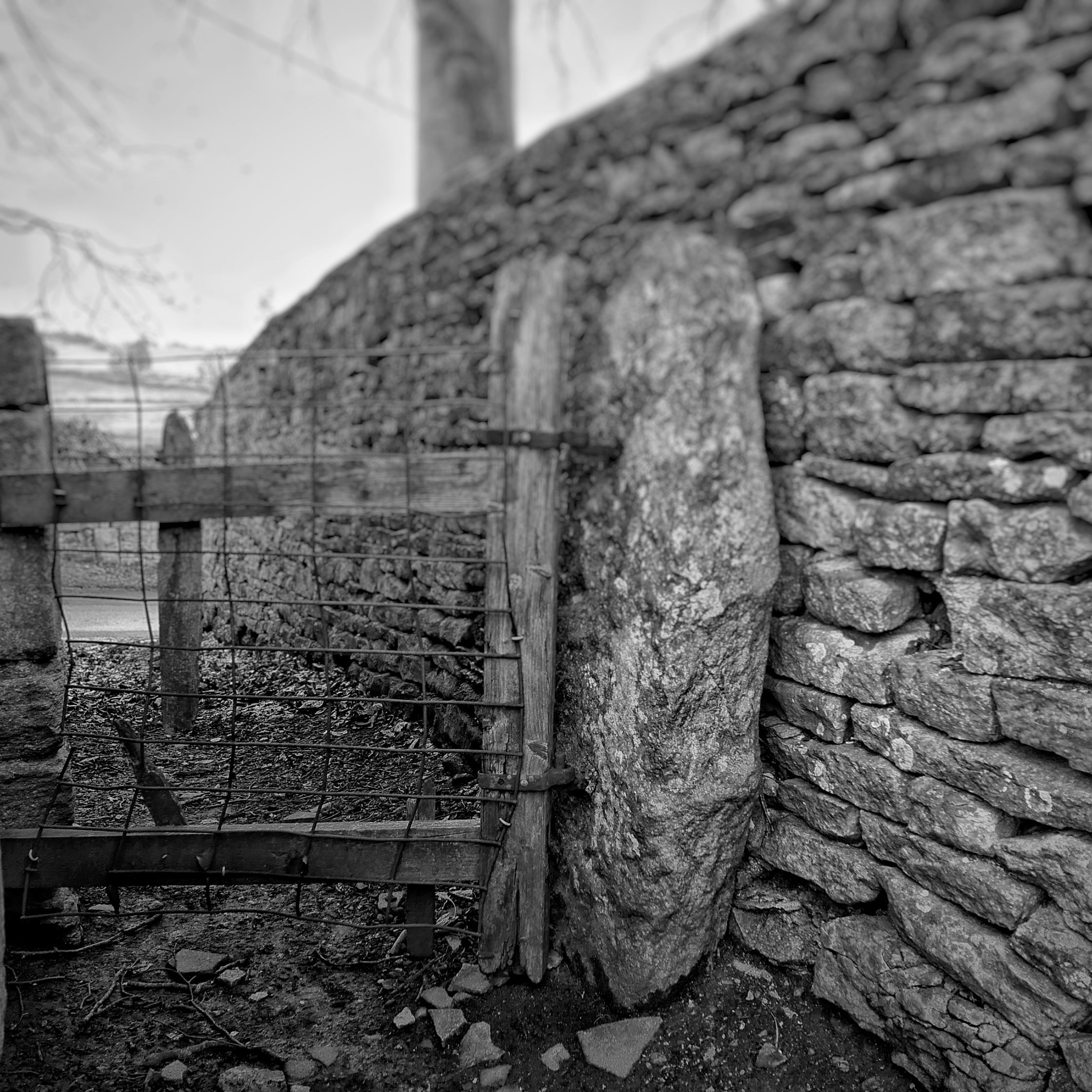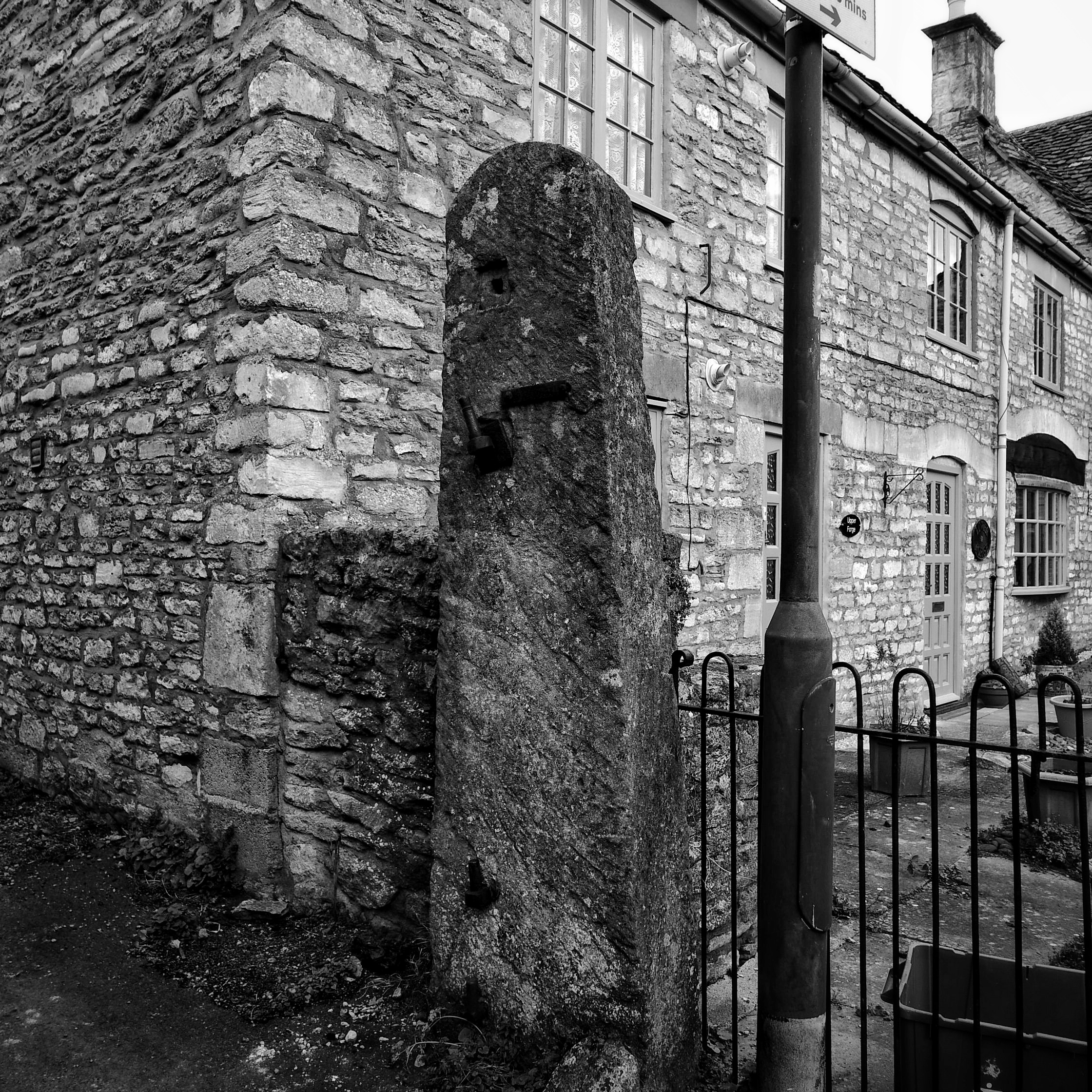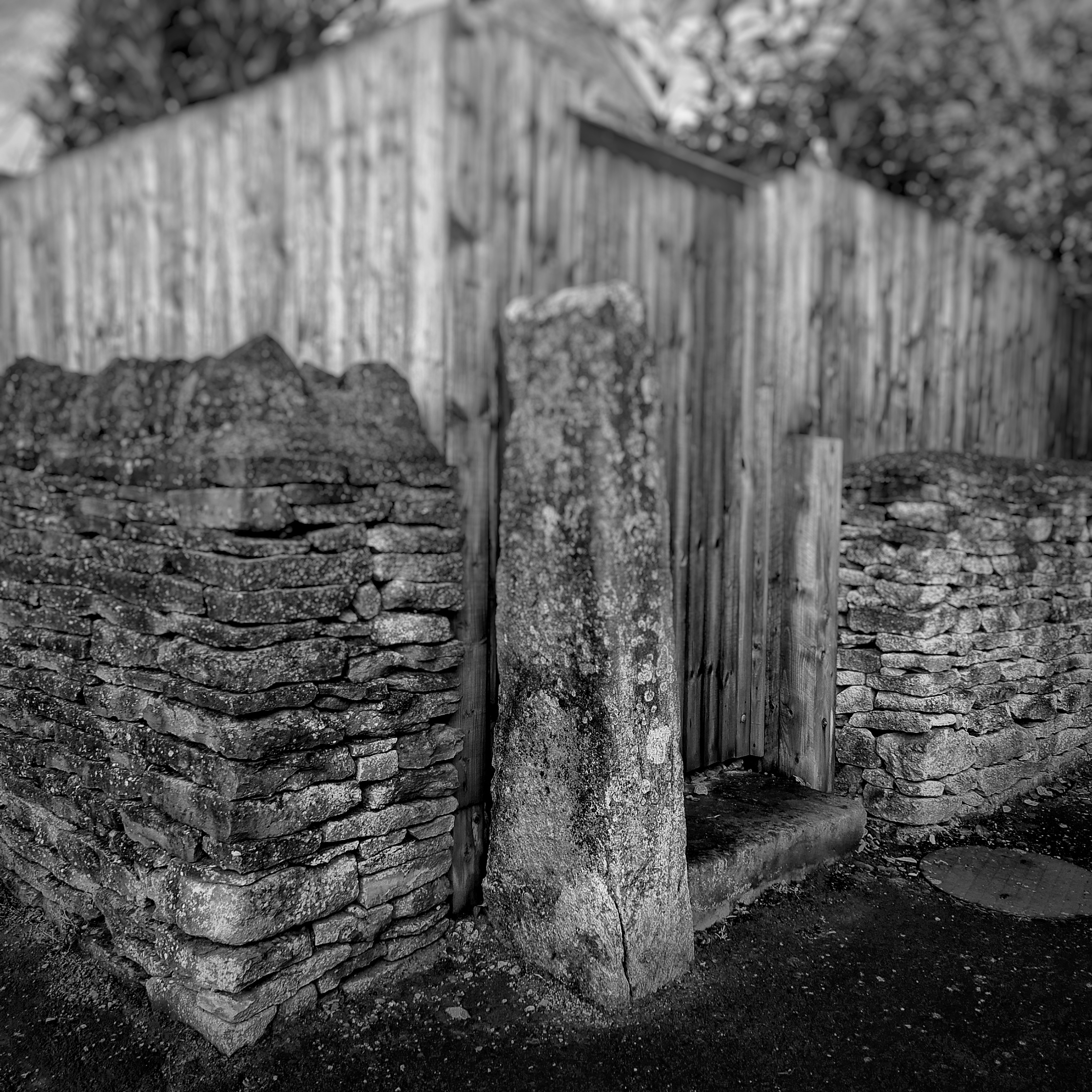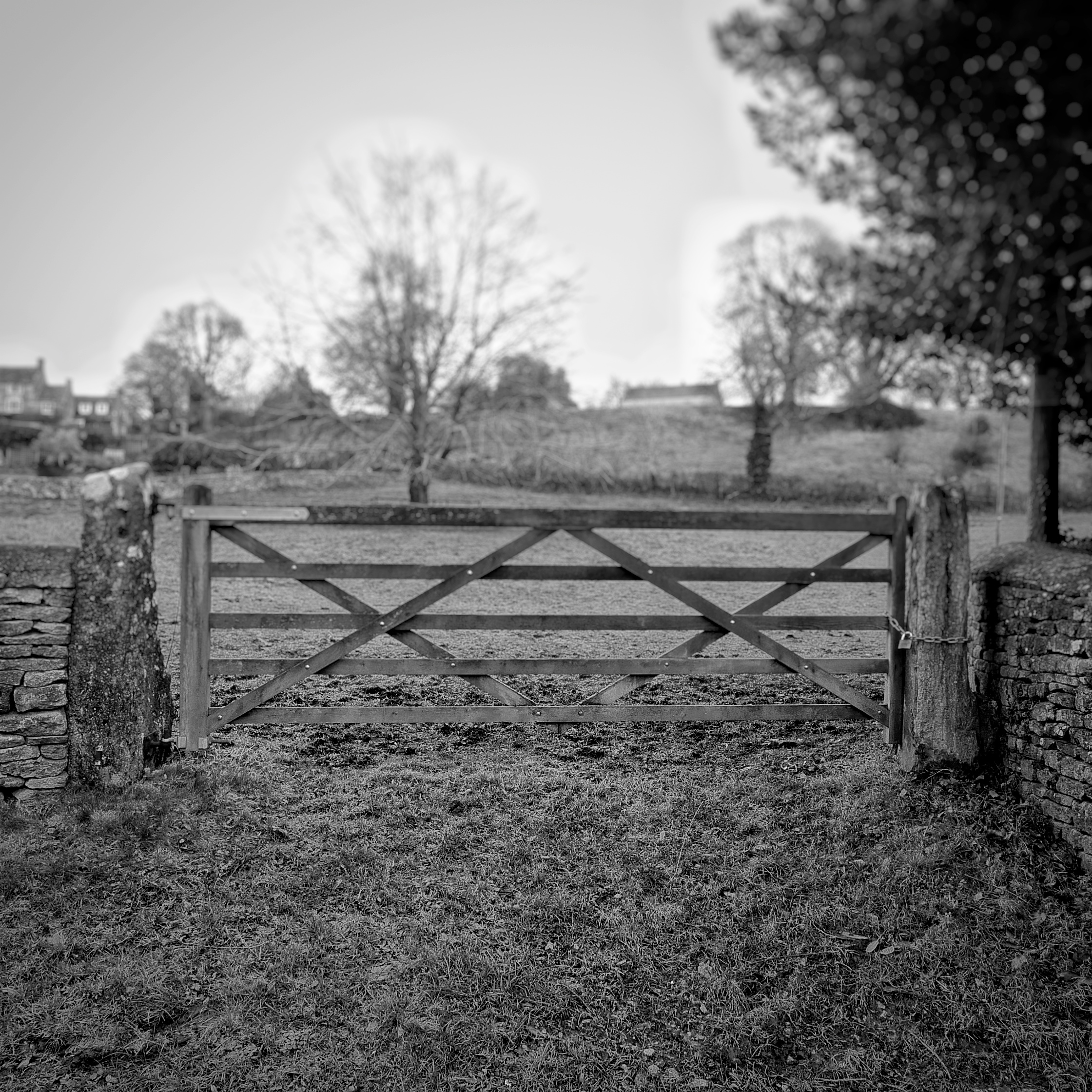"STONE LOVERS, WE LOOK WITH SURPRISE
AT THESE STRANGE MONOLITHS IN DISGUISE
PLACED HERE BY OLD HANDS OF PAST
THEIR DESTINIES FOR GATEPOSTS CAST"
"Blessed Posts", Payne. M, Faber & Faber, 1963
Between January 2017 and January 2018, I made several visits to Minchinhampton to study and photograph its famous megaliths. But the stones I found most intriguing - and prolific - were not the 5,000 year old Long Stone, Lang Stone or Tingle Stone, but the village's ancient stone gateposts.
Minchinhampton is a peaceful village lying in an area of outstanding natural beauty in the South Cotswolds. It is known for the iron age earthworks on its common known as the Bulwarks. Natural springs also pop up in the hillsides surrounding the common, which are credited in some of the street names (such as Well Hill).
For megalith hunters, Minchinhampton is famous for the "Wandering Stones" - a dispersed group of toppled menhirs; potentially robbed from longbarrows; which are according to folklore known to self-propel themselves around fields at midnight - some to even drink at the local springs, before returning to their original positions before dawn.
But along with these fascinating oddities, there lies yet another class of ancient stone given scant interest in these information hungry times. The stone gateposts of Minchinhampton. I hope this brief study will prompt those living in and visiting Minchinhampton to look anew at these grand stones.
Minchinhampton shown in relation to the Stroud Valleys and Cotswold Plateau, which stretches to Cirencester.
Minchinhampton stands at the centre of a high plateau at a height of around 600 feet, reaching out as far as Rodborough, a spectacular promontory with far-reaching views across the Severn to the Forest of Dean and Black Mountains of Wales. It is bounded on the north by the river Frome, on the west by the Nailsworth stream, and on the south by the Avening stream. The north-west boundary with Rodborough parish, formerly a part of Minchinhampton, and the east boundary cross the high upland area. The valleys lie on the Upper Lias with overlying bands of the Inferior Oolite and fuller's earth, and the high ground is formed by the Great Oolite or Forest Marble.
From Minchinhampton towards Cirencester, the ridge widens into a broad but isolated arable plateau. In contrast to the cramped topography of the Stroud Valleys, the empty lanes towards Rodmarton and Cherington out towards Cirencester and Tetbury conjure a bleak and ancient past. While the fields are fertile and the farms well managed, I sense the eerie and otherworldly echos of time in this neglected backwater. This is an area where only the bold venture. There are powerful nature spirits in these forgotten fields.
QUARRYING THE GATEPOSTS
Minchinhampton is rich in stone. Its cotswold dry stone walls encircle miles of fields stretching throughout the hills and valleys of the surrounding area. Most are field walls and went up in the early- to mid-1800s, in the wake of the enclosure acts. For a century they were well maintained; these days, farming lacks the resources and many are in need of repair. Minchinhampton is surrounded by steep valleys, which thoughout history have lent themselves to the exploitation of natural stone; mostly lower oolitic limestone which is a fine building material.
Stone was quarried in Minchinhampton up to the 1920s, most of the pits now grassy ghosts of their former glory. Such quarries provided large blocks of Greater Oolite, a high quality weather stone. With this natural abundance of stone came the trade of stonemasons, such as the Wall family from Brimscombe, after whom Walls Quarry is thought to be named. One Peter wall of Brimscombe, was listed in the Hearth Tax Record of 1671 as s highly rated taxpayer, and his will stated his profession as Freemason (a Freemason works with the best quality freestone; ie stone that can be worked in any direction).
Shallow quarries can be seen either side of the Cirencester Road, with Crane Quarry near Tom Long's Post still containing exposed faces of limestone and some large blocks can be found hiding in the undergrowth. Mines exist at Pensile Road and Wall's Quarry on Brimscombe Hill. Whilst grilled, it is sometimes possible to go in with the permission of the landowner and relevant safety precautions. The large, echoing chambers are surprisingly convivial with their clean, unbroken walls of limestone and loose piles of stones.
GATEPOSTS OF MYSTERY
An unbroken stone surface is a most curious phenomenon. In my photoessay "Lenses to the Other World", I observed vast recumbent stones of dolerite, gneiss, quartz and granite which stood between two flanking pillars in Aberdeenshire's unique form of prehistoric stone circle:
"Think of this as a wall. When the crushing irrelevance of that analogy dawns on you, and the unthinkable weirdness of this structure as a wall, you begin to open your mind to concepts alien, which in turn prizes open the jaws of meaning. If you can find a trader who claims their preferred method for constructing a wall is from a single disc of granite, weighing up to 50 tons, which must be dragged by 100 people from the nearest glacial valley, you would either be under a psychedelic delusion, or be talking to an ancient Grampian visionary. These are no laughing matter however. These are lenses into the Other World.
What are these things?
It is obvious to me why this 40 ton monster of the sea was dug up, bound, dragged, hammered, smoothed, prepared and finally consecrated here. Because the people - or someone - knew that this wall - this lens - could send its tentacles into the Other World. This symbol; this abomination; this distortion of everything normal and sensible and wall-like, opens the jaws of meaning wherein - through the spinning blackness, truth is found."
The singularity of a stone conjures peculiar associations. Compare the cluttered, yet orderly surface of a dry stone wall with the towering mass next to it in the photos below. The same substance, but not the same substance. The gatepost is a cosmically charged lump, appearing to my eyes like a large sentient animal, perhaps possessing a greater form of energy vibration than the smaller stones piled next to it. Perhaps its energy vibrations are closer to the psychic sensory spectrum of our own bodies, than those of the smaller stones. It is like seeing a shark swimming among seabass.
Were the stonemasons aware of these energies? Did they consciously pair up such gigantic stones; weighing hundreds of kilograms and requiring considerable effort to move, shape and erect; with the modest dry stone walls, to create an impressive spectacle? Were the patrons of these gateposts suitably impressed? Did they demand such eccentric monoliths in their gardens? Were they aware of the association with standing stones? Was it a case of "the bigger, the better" for the upwardly mobile villager?
This gatepost on 3, Cuckoo Row and its twin stand over six feet tall. The house is immediately adjacent to the Lammas.
“What has perplexed me most about these strange stones is their extravagance; they are beyond all means reasonable for these purposes. They are like trophies robbed from the temples to adorn man’s simple abodes; like the kitsch oriental lions standing guard outside the semi. But these are real antiquities. They hold deep, distant memories of times forgotten.”
ANCIENT POWER THIS POST NEGATES WHILE LIGHT WORK MADE OF IRON GATES NO FLICKER OF GUILT FOR PLUNDERING GRAVES TURNING STONES TO BURDENED SLAVES
""Blessed Posts", Payne. M, Faber & Faber, 1963
A sturdy stone on the New Road which the current landowners have preserved to a degree, fixing a wooden gatepost to it so that it can be appreciated.
A roughly hewn stone between New Road and Well Hill
TOWERS OF STONE
That such unnecessarily heavy and awkward stones were used to hold gates, is testament to man's ostentatious pride. It also demonstrates his industry in selecting, quarrying and shaping stones to meet his needs. Once, the stone mauls of Neolithic man struck at the Stonehenge Sarsen stones for weeks on end, slowly but surely flattening the unhewn stones into flat faced obelisks.
With his metal tools, man could chisel a stone into a flat worked surface in less than a day. Many of the stone gateposts have been heavily worked, but others, usually those found in the boundaries of fields as opposed to the entrances to large houses, have been only roughly shaped, and it only takes a minor leap of faith to imagine some of the larger stones being robbed from prehistoric chambered tombs such as those at Gatcombe Lodge, Hyde and Whitfield's Tump (to name but three that survive of the hundreds that do not).
Up until the mid nineteenth century, stones were still being taken from Avebury in Wiltshire, now part of a UNESCO world heritage site.
The gateposts on the paths between New Road and Box Lane are roughly shaped.
STONES OF ANTIQUITY
Unfortunately, it is clear that some monumental stones in Minchinhampton were taken from significant prehistoric sites. In Hyde, remains of the badly plundered longbarrow, opened in 1848, have been used as crude parking bollards and gateposts.
At the Lammas, remains of two stones of great antiquity have been propped up at the entrance, with two other large slabs supporting a bridge over the hollow way from West End which runs through its garden. G F Playne in 1876 delivered a paper to the Bristol & Gloucestershire Archaeological Society entitled 'On the destruction of a Gloucestershire Menhir' (see Transactions of BGAS Vol.1 1876 p106) wherein he suggested that the Cobstone and the Picked Stone were removed in the 1830s to the grounds of a local house for building work. It has been discovered since that The Cobstone and The Picked Stone were last seen on the Common in 1835.
CONCLUSION
Gateposts are not an obvious subject for study. I have admittedly seen these striking monoliths through the eyes of a megalith hunter; but have come to the conclusion that these are valid megaliths. They meet almost all the criteria. For a start, the oolitic limestone itself is barely indistinguishable from that of the famous Long Stone - save for the obvious holes. Secondly, they stand like sentinels, creating dramatic juxtapositions with dry stone walling and emitting a strong energy despite their domestication to the role of gatepost.
If you have any stories to share of unusual gateposts or standing stones I would be hugely grateful to hear from you. My facebook page and contact details can be found below.

